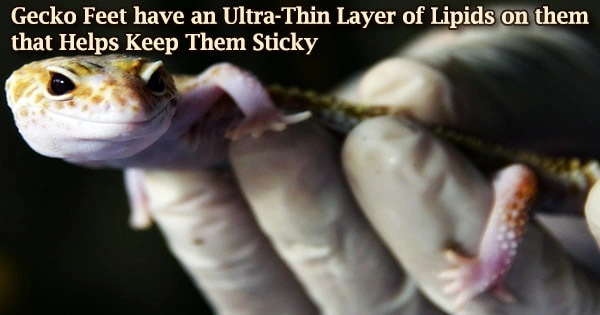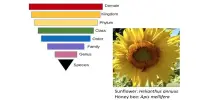Geckos are renowned for possessing sticky feet that make it easy for them to climb vertical surfaces. The millions of microscopic, hair-like structures on their toes give them this seeming superpower.
These structures, known as setae, are covered in an ultra-thin film of water-repelling lipid molecules that is only one nanometer, or a billionth of a meter, thick, according to recent research.
The setae’s surface was examined by National Institute of Standards and Technology (NIST) researchers using high-energy X-rays produced by a synchrotron, a particular kind of particle accelerator.
The synchrotron microscope revealed that the lipid molecules are arranged in dense, systematic arrays on the surface of the setae. Due to their hydrophobic properties, which cause them to repelled water, lipids can participate in this process.
“The lipids might function to push away any water beneath the spatulae, allowing them to make closer contact with the surface,” said physicist and co-author Tobias Weidner of Aarhus University in Denmark. “This would help geckos maintain their grip on wet surfaces.”
A keratin protein resembling that in human hair and fingernails makes up the setae and spatulae. They are incredibly fragile. The keratin fibers are aligned in the direction of the setae, according to the research, which may increase their resistance to abrasion.
“The most exciting thing for me about this biological system is that everything is perfectly optimized on every scale, from the macro to the micro to the molecular,” said biologist and co-author Stanislav Gorb of Kiel University in Germany. “This can help biomimetic engineers know what to do next.”
“You can imagine gecko boots that don’t slip on wet surfaces or gecko gloves for holding tools that are wet,” said NIST physicist and co-author Dan Fischer. “Or a vehicle that can run up walls, or a robot that can run along power lines and inspect them.”
The lipids might function to push away any water beneath the spatulae, allowing them to make closer contact with the surface. This would help geckos maintain their grip on wet surfaces.
Tobias Weidner
The capacity to recognize molecules on the surface of a three-dimensional object, quantify their orientation, and map their position makes the NIST synchrotron microscope employed by researchers to study the setae special.
It is situated at the Brookhaven National Laboratory of the U.S. Department of Energy, where a source of high-energy X-rays is provided by the National Synchrotron Light Source II, a particle accelerator that is half a mile long.
Understanding the physics of modern industrial materials, such as batteries, semiconductors, solar panels, and medical devices, is often accomplished with this microscope.
“But it is fascinating to figure out how gecko feet work,” Fischer said, “and we can learn a lot from nature when it comes to improving our own technology.”
The results were published in Biology Letters by an international group of academics. The same method was utilized in an earlier companion study to demonstrate how the individual protein strands that make up the setae are aligned, which was published in Physical Chemistry Letters.
“A lot was already known about how setae work mechanically,” said NIST physicist and co-author Cherno Jaye. “Now we have a better understanding of how they work in terms of their molecular structure.”
Many items, including adhesive tapes with setae-like microstructures, have been influenced by geckos. Understanding the chemical characteristics of setae can help designers who draw their ideas from nature, a practice known as biomimicry, create even better creations.
Due of their flexibility and ability to take on the minuscule shapes of any surface the gecko is climbing, setae act as adhesives. The setae’s spatulae, which are even smaller structures, come into such close contact with the climbing surface that van der Waals forces, a sort of attraction, are generated as a result of the interaction between the electrons in the two materials.
The gecko alters the angle of the setae to release its foot, which may otherwise remain stuck. This breaks up the forces acting on the foot and enables the animal to move on to the next step.
















